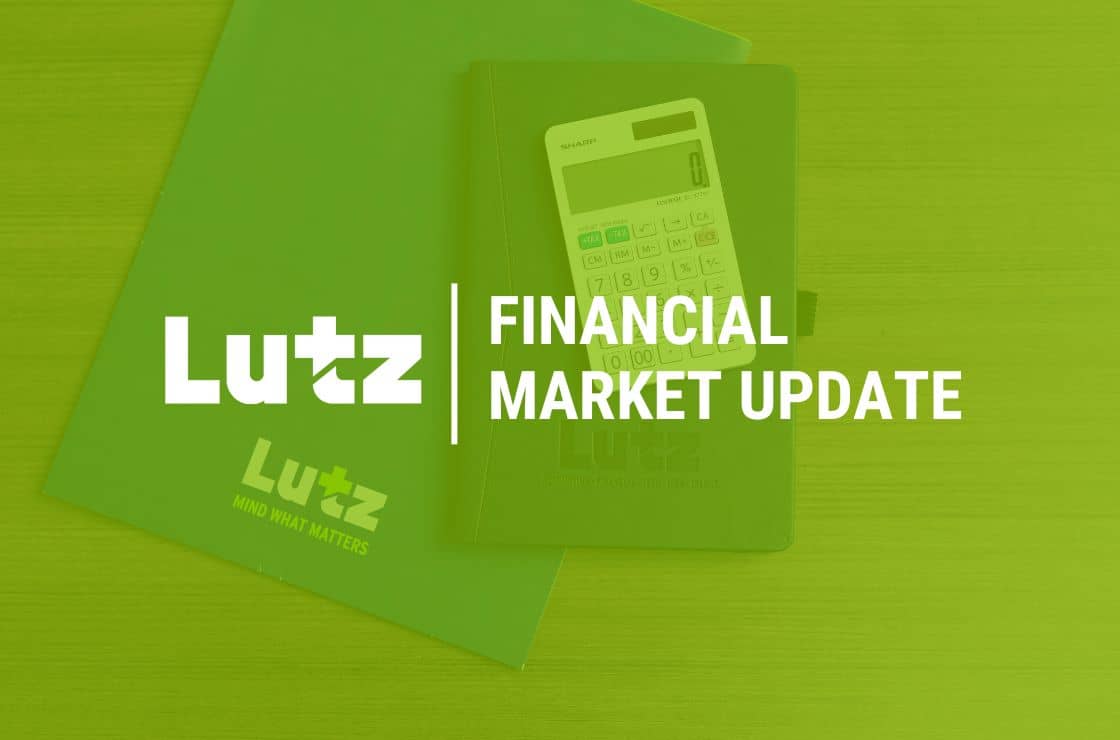Is now the time to own gold?
.jpg)
The price of gold has been on a tear recently. With a year-to-date return of 66.0%, the precious metal has outpaced traditional asset classes, including the broad U.S. stock market (+15.3%), international stocks (+28.5%)(1), and even the frothy technology stocks of the NASDAQ 100 Index (+20.3%). Oftentimes, when an asset like gold goes on a hot streak, it garners substantial attention. This leads to the inevitable questions from investors on whether they risk missing out by not owning it.
There are several potential reasons for the rally in gold:
- U.S. Dollar weakness (currency risk)
- Geo-political risk
- Central bank buying
- Inflation fear
- Fear of missing out (FOMO)
When it comes to keeping up with other asset classes like stocks, gold faces a substantial headwind. While the above reasons have generated increased demand for gold, which has pressured prices higher, those factors can reverse at any point in the future. The resulting decline in demand could stall any further rise or even reverse it if buying activity flips to selling. Gold does not generate earnings or anything else of value. Its ability to deliver a positive return rests solely on the belief that somebody in the future will be willing to pay you more than what you paid today.
As the chart below demonstrates, stocks have significantly outpaced gold over the long term.

Source: DFA Returns Web. Returns are cumulative from 1/1/1970 to 10/20/2025.
The superior returns generated by the stock market arise from the fact that businesses generate cash flow that can be reinvested. Reinvestment allows these companies to expand their operations, which increases their ability to generate even more cash flow, and so on in a virtuous cycle that has been a miracle of wealth creation.
Warren Buffett shared his thoughts on the subject in the 2011 Berkshire Hathaway shareholder letter. At the time this was published, gold was still trading near its previous peak:
"Today, the world’s gold stock is about 170,000 metric tons. If all of this gold were melded together, it would form a cube of about 68 feet per side. (Picture it fitting comfortably within a baseball infield.) At $1,750 per ounce – gold’s price as I write this – its value would be $9.6 trillion. Call this cube pile A.
Let’s now create a pile B costing an equal amount. For that, we could buy all U.S. cropland (400 million acres with output of about $200 billion annually), plus 16 Exxon Mobils (the world’s most profitable company, one earning more than $40 billion annually). After these purchases, we would have about $1 trillion left over for walking-around money (no sense feeling strapped after this buying binge). Can you imagine an investor with $9.6 trillion selecting pile A over pile B?
A century from now, the 400 million acres of farmland will have produced staggering amounts of corn, wheat, cotton, and other crops – and will continue to produce that valuable bounty, whatever the currency may be. Exxon Mobil will probably have delivered trillions of dollars in dividends to its owners and will also hold assets worth many more trillions (and, remember, you get 16 Exxons). The 170,000 tons of gold will be unchanged in size and still incapable of producing anything. You can fondle the cube, but it will not respond."
There is nothing to say the price of gold cannot increase significantly from here, particularly with a new crop of retail traders ready to pile into any asset with momentum. The bottom line, however, is that gold should not be counted on to generate long-term wealth as well as stocks or to diversify stocks as well as bonds. There can and will be periods where gold outshines other asset classes, but its inability to produce anything of value ultimately limits its value. Long-term investors are better off sticking with a diversified portfolio of stocks and bonds.
1. The Broad U.S. stock market was represented by the Russell 3000 Index. International stocks were represented by the MSCI ACWI Ex USA Index. Year-to-date returns are cumulative between 1/1/2025 and 10/20/2025.Week in Review
- Mortgage rates dipped to 6.27% on Thursday, October 16th, as measured by Freddie Mac’s Primary Mortgage Market Survey. The decline followed a drop in 10-year Treasury yields, which fell to 4.02%, bringing mortgage rates near their year-to-date low of 6.26%.
- Initial jobless claims in the U.S. were estimated to have decreased by 18,000 to 217,000 for the week ending October 11th. Although the federal government shutdown has temporarily suspended the release of official economic data, individual states have continued to collect unemployment claims, allowing for a nationwide estimate. The latest figure indicates little to no improvement in the unemployment rate, which held at 4.3% in August, near its highest level in four years.
- According to FactSet, 12% of the S&P 500 have reported Q3 2025 results as of last Friday, October 17th. The earnings growth rate, blended between companies that have already reported with the estimates for those that have yet to report, is at 8.5% year-over-year, which would mark the ninth straight quarter of earnings growth for the index. Key earnings to watch for this week include Netflix, Tesla, Coca-Cola, and Union Pacific.
Hot Reads
Markets
- This Week’s Critical Inflation Report Comes with a Variety of Doubts About the Data (CNBC)
- Shutdown Leaves Fed in Dark on Data as It Weighs Next Rate Move
- Tariff Costs to Companies This Year To Hit $1.2 Trillion, With Consumers Taking Most of the Hit, S&P Says (CNBC)
Investing
- Stocks Go Down Too (Ben Carlson)
- The Hidden Cost of Playing the Stock Market’s Slot Machine
- Is The Stock Market Overvalued? (Adam Grossman)
Other
- Will AI Take Your Job? – The Informed Investor (YouTube)
- Inside The Pentagon’s AI Revolution – Bloomberg Television (YouTube)
- The $1 Trillion Tangled Web of AI Deals Mapped Out – CNBC (YouTube)
Markets at a Glance



Source: Morningstar Direct.

Source: Morningstar Direct.

Source: Treasury.gov

Source: Treasury.gov

Source: FRED Database & ICE Benchmark Administration Limited (IBA)

Source: FRED Database & ICE Benchmark Administration Limited (IBA)
Economic Calendar
Source: MarketWatch

- Competition, Achiever, Relator, Analytical, Ideation
Josh Jenkins, CFA
Josh Jenkins, Chief Investment Officer, began his career in 2010. With a background in investment analysis and portfolio management from his previous roles, he quickly advanced to his current leadership position. As a member of the Lutz Financial Board and Chair of the Investment Committee, he guides Lutz Financial’s investment strategy and helps to manage day-to-day operations.
Leading the investment team, Josh directs research initiatives, while overseeing asset allocation, fund selection, portfolio management, and trading. He authors the weekly Financial Market Update, providing clients with timely insights on market conditions and economic trends. Josh values the analytical nature of his work and the opportunity to collaborate with talented colleagues while continuously expanding his knowledge of the financial markets.
At Lutz, Josh exemplifies the firm’s commitment to maintaining discipline and helping clients navigate market uncertainties with confidence. While staying true to the systematic investment process, he works to keep clients' long-term financial goals at the center of his decision-making.
Josh lives in Omaha, NE. Outside the office, he likes to stay active, travel, and play golf.
Recent News & Insights
3 Tips to Improve the Tax Efficiency of Your Portfolio
Lutz adds Jacobus and Nelson
Leveraging Market Analysis Reports for Successful Sell-Side M&A Transactions
10 Cybersecurity Strategies for Healthcare Practices



.jpg?width=300&height=175&name=Mega%20Menu%20Image%20(1).jpg)
%20(1).jpg?width=300&height=175&name=Mega%20Menu%20Image%20(2)%20(1).jpg)
%20(1)-Mar-08-2024-09-27-14-7268-PM.jpg?width=300&height=175&name=Untitled%20design%20(6)%20(1)-Mar-08-2024-09-27-14-7268-PM.jpg)

%20(1)-Mar-08-2024-09-11-30-0067-PM.jpg?width=300&height=175&name=Untitled%20design%20(3)%20(1)-Mar-08-2024-09-11-30-0067-PM.jpg)
%20(1).jpg?width=300&height=175&name=Mega%20Menu%20Image%20(3)%20(1).jpg)
%20(1).jpg?width=300&height=175&name=Mega%20Menu%20Image%20(4)%20(1).jpg)
%20(1).jpg?width=300&height=175&name=Mega%20Menu%20Image%20(5)%20(1).jpg)
-Mar-08-2024-08-50-35-9527-PM.png?width=300&height=175&name=Untitled%20design%20(1)-Mar-08-2024-08-50-35-9527-PM.png)


.jpg)







